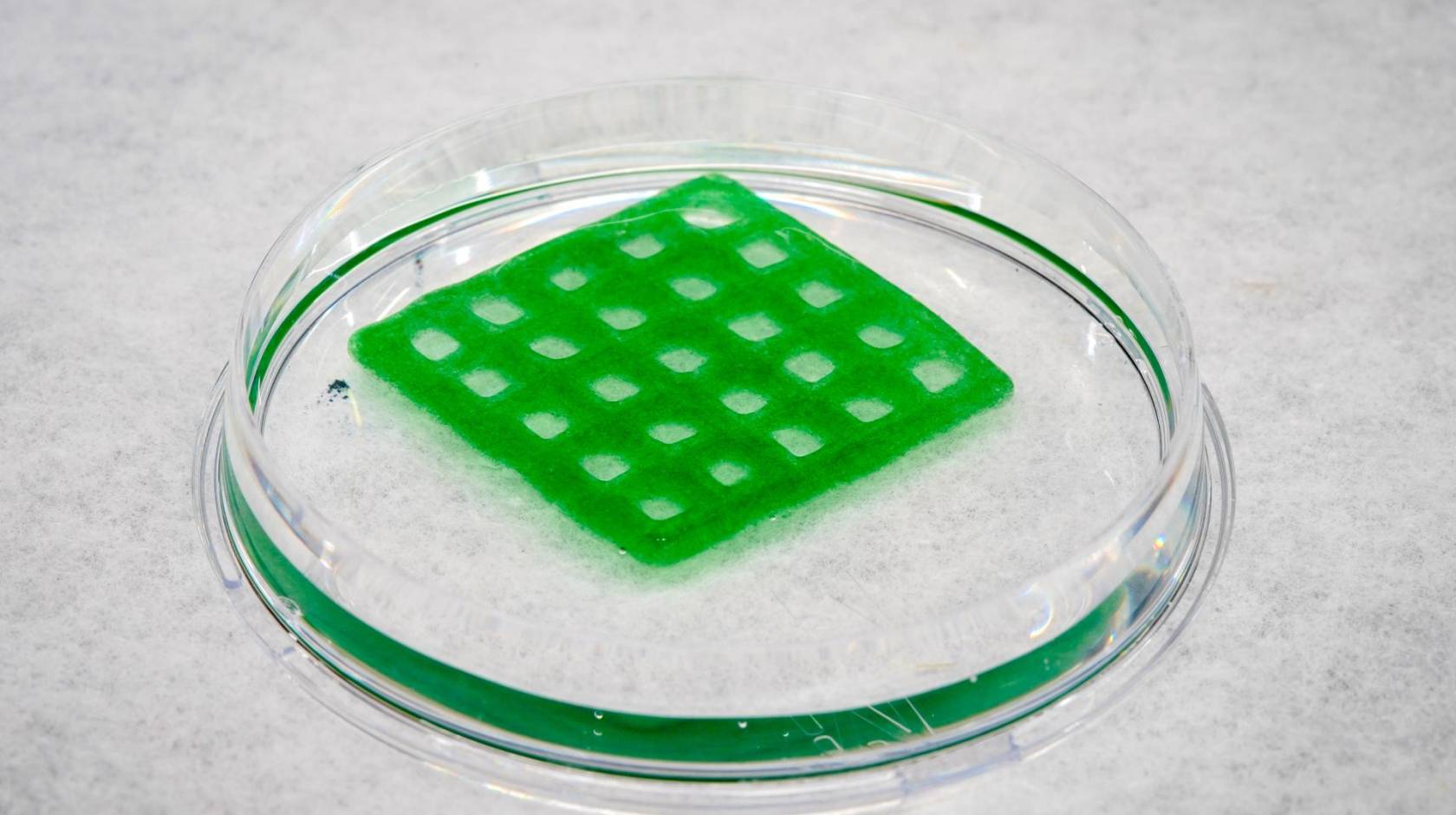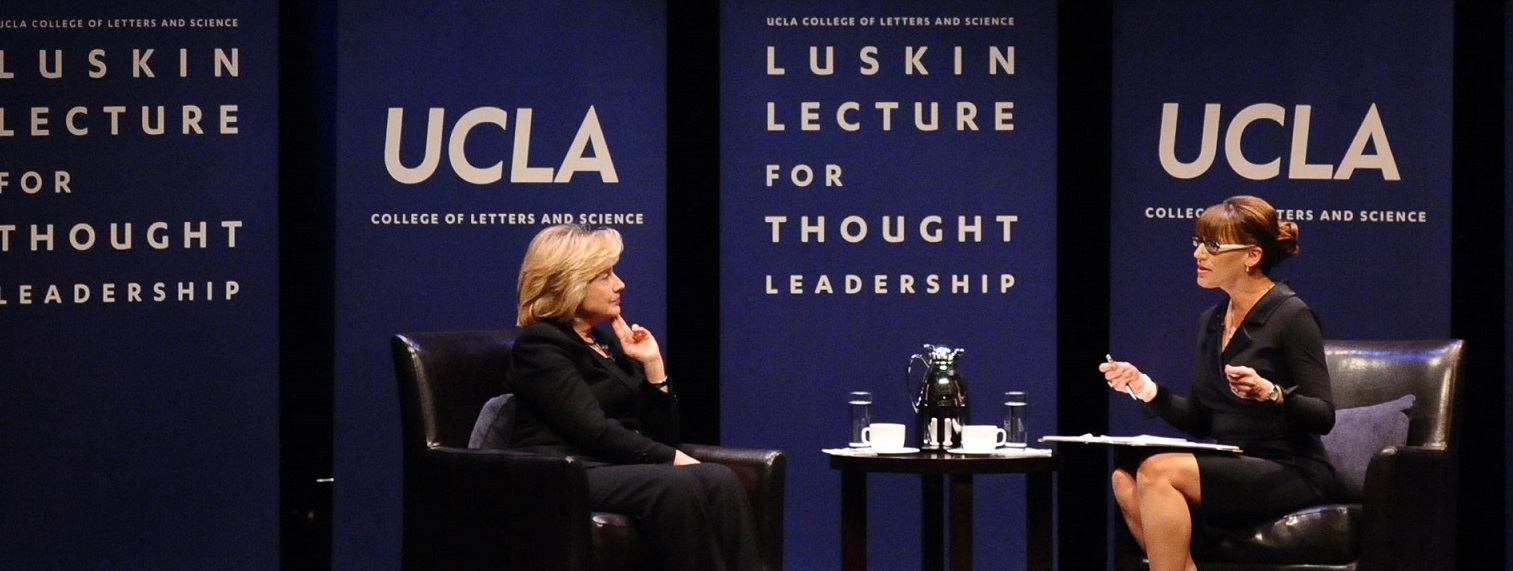
Researchers at the University of California, San Diego, have developed a new type of material that could offer a sustainable and eco-friendly solution to clean pollutants from water.
加州大学圣地亚哥分校(the University of California, San Diego)的研究人员开发出一种新型材料,可以提供一种可持续的、环保的解决方案来清洁水中的污染物。
Dubbed an “engineered living material,” it is a 3D-printed structure made of a seaweed-based polymer combined with bacteria that have been genetically engineered to produce an enzyme that transforms various organic pollutants into benign molecules. The bacteria were also engineered to self-destruct in the presence of a molecule called theophylline, which is often found in tea and chocolate. This offers a way to eliminate them after they have done their job.
它被称为“工程生物材料”,是一种3d打印结构,由海藻聚合物和细菌结合而成,这些细菌经过基因工程改造,可以产生一种酶,将各种有机污染物转化为良性分子。这些细菌还被设计成在茶碱分子存在的情况下自我毁灭,茶碱通常存在于茶和巧克力中。这提供了一种在他们完成工作后将他们清除的方法。
The researchers describe the new decontaminating material in a paper published in the journal Nature Communications.
研究人员在《自然通讯》(Nature Communications)杂志上发表的一篇论文中描述了这种新的去污材料。
“What’s innovative is the pairing of a polymer material with a biological system to create a living material that can function and respond to stimuli in ways that regular synthetic materials cannot,” said Jon Pokorski, a professor of nanoengineering at UC San Diego who co-led the research.
“创新之处在于将聚合物材料与生物系统相结合,创造出一种有生命的材料,这种材料能够以常规合成材料无法做到的方式发挥作用并对刺激做出反应,”加州大学圣地亚哥分校纳米工程教授乔恩·波科尔斯基(Jon Pokorski)说,他是这项研究的共同负责人。
The work was a collaboration among engineers, materials scientists and biologists at the UC San Diego Materials Research Science and Engineering Center (MRSEC). Co-principal investigators of the multidisciplinary team include molecular biology professors Susan Golden and James Golden and nanoengineering professor Shaochen Chen.
这项工作是由加州大学圣地亚哥分校材料研究科学与工程中心(MRSEC)的工程师、材料科学家和生物学家合作完成的。多学科团队的联合首席研究员包括分子生物学教授苏珊·戈尔登(Susan Golden)和詹姆斯·戈尔登(James Golden)以及纳米工程教授陈少琛(Shaochen Chen)。
“This collaboration allowed us to apply our knowledge of the genetics and physiology of cyanobacteria to create a living material,” said Susan Golden, a faculty member in the School of Biological Sciences. “Now we can think creatively about engineering novel functions into cyanobacteria to make more useful products.”
“这次合作使我们能够运用我们在蓝藻的遗传学和生理学方面的知识来创造一种活的材料,”生物科学学院的教员苏珊·戈尔登(Susan Golden)说。“现在我们可以创造性地思考为蓝藻注入新的功能,以制造更有用的产品。”
To create the living material in this study, the researchers used alginate, a natural polymer derived from seaweed, hydrated it to make a gel and mixed it with a type of water-dwelling, photosynthetic bacteria known as cyanobacteria.
为了在这项研究中创造出有生命的材料,研究人员使用了海藻酸盐,一种从海藻中提取的天然聚合物,将其水化制成凝胶,并将其与一种水生光合细菌蓝藻混合。
The mixture was fed into a 3D printer. After testing various 3D-printed geometries for their material, the researchers found that a grid-like structure was optimal for keeping the bacteria alive. The chosen shape has a high surface area to volume ratio, which places most of the cyanobacteria near the material’s surface to access nutrients, gases and light.
这种混合物被送入3D打印机。在测试了各种3D打印几何形状的材料后,研究人员发现网格状结构是保持细菌存活的最佳结构。所选择的形状具有较高的表面积体积比,这使得大多数蓝藻靠近材料表面以获取营养物质,气体和光线。
The increased surface area also makes the material more effective at decontamination.
增加的表面积也使材料更有效地去污。
As a proof-of-concept experiment, the researchers genetically engineered the cyanobacteria in their material to continually produce a decontaminating enzyme called laccase. Studies have shown that laccase can be used to neutralize a variety of organic pollutants including bisphenol A (BPA), antibiotics, pharmaceutical drugs and dyes. In this study, the researchers demonstrated that their material can be used to decontaminate the dye-based pollutant indigo carmine, which is a blue dye that is widely used in the textile industry to color denim. In tests, the material decolorized a water solution containing the dye.
作为一项概念验证实验,研究人员对材料中的蓝藻进行了基因改造,使其不断产生一种名为漆酶的去污酶。研究表明,漆酶可用于中和多种有机污染物,包括双酚a (BPA)、抗生素、药物和染料。在这项研究中,研究人员证明,他们的材料可以用来净化染料污染物靛蓝胭脂红,这是一种蓝色染料,在纺织工业中广泛用于给牛仔布上色。在试验中,这种材料在含有染料的水溶液中脱色。
The researchers also developed a way to eliminate the cyanobacteria after the pollutants have been cleared. They genetically engineered the bacteria to respond to a molecule called theophylline. The molecule triggers the bacteria to produce a protein that destroys their cells.
研究人员还开发了一种在污染物被清除后消除蓝藻的方法。他们对细菌进行基因改造,使其对一种叫做茶碱的分子产生反应。这种分子会引发细菌产生一种破坏细胞的蛋白质。
“The living material can act on the pollutant of interest, then a small molecule can be added afterwards to kill the bacteria,” said Pokorski. “This way, we can alleviate any concerns about having genetically modified bacteria lingering in the environment.”
波科尔斯基(Pokorski)说:“这种活性物质可以作用于感兴趣的污染物,然后添加一种小分子来杀死细菌。”“通过这种方式,我们可以减轻对环境中存在转基因细菌的任何担忧。”
A preferable solution, the researchers note, is to have the bacteria destroy themselves without the addition of chemicals. This will be one of the future directions of this research.
研究人员指出,一个更好的解决方案是让细菌在不添加化学物质的情况下自我毁灭。这将是未来研究的方向之一。
“Our goal is to make materials that respond to stimuli that are already present in the environment,” said Pokorski.
“我们的目标是制造对环境中已经存在的刺激做出反应的材料,”波科尔斯基(Pokorski)说。
“We’re excited about the possibilities that this work can lead to, the exciting new materials we can create. This is the kind of research that can result when researchers with cross-disciplinary expertise in materials and biological sciences join forces. This is all made possible thanks to our interdisciplinary research group at the UC San Diego MRSEC.”
“我们对这项工作可能带来的可能性感到兴奋,我们可以创造出令人兴奋的新材料。这种研究是材料和生物科学领域跨学科专业知识的研究人员联合起来的结果。这一切都要归功于我们在加州大学圣地亚哥分校MRSEC的跨学科研究小组。”




